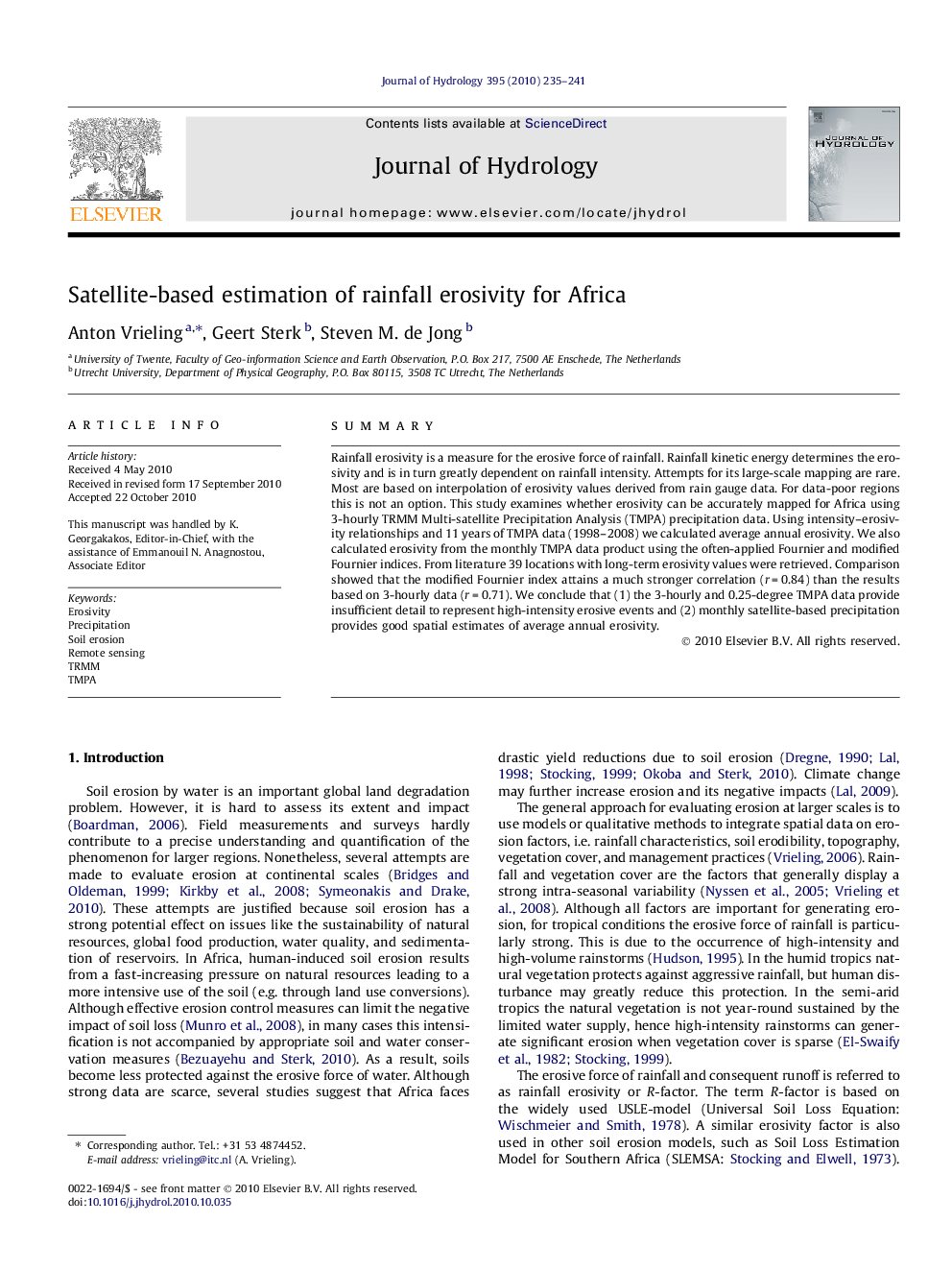| Article ID | Journal | Published Year | Pages | File Type |
|---|---|---|---|---|
| 4578020 | Journal of Hydrology | 2010 | 7 Pages |
SummaryRainfall erosivity is a measure for the erosive force of rainfall. Rainfall kinetic energy determines the erosivity and is in turn greatly dependent on rainfall intensity. Attempts for its large-scale mapping are rare. Most are based on interpolation of erosivity values derived from rain gauge data. For data-poor regions this is not an option. This study examines whether erosivity can be accurately mapped for Africa using 3-hourly TRMM Multi-satellite Precipitation Analysis (TMPA) precipitation data. Using intensity–erosivity relationships and 11 years of TMPA data (1998–2008) we calculated average annual erosivity. We also calculated erosivity from the monthly TMPA data product using the often-applied Fournier and modified Fournier indices. From literature 39 locations with long-term erosivity values were retrieved. Comparison showed that the modified Fournier index attains a much stronger correlation (r = 0.84) than the results based on 3-hourly data (r = 0.71). We conclude that (1) the 3-hourly and 0.25-degree TMPA data provide insufficient detail to represent high-intensity erosive events and (2) monthly satellite-based precipitation provides good spatial estimates of average annual erosivity.
